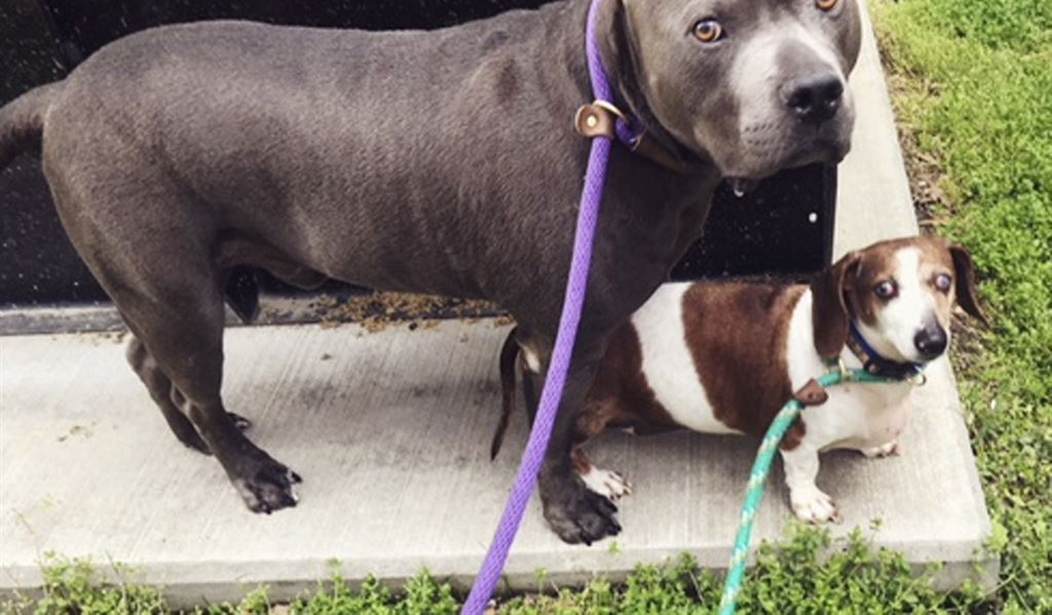Via Human Events:
Two were arrested in Greater Manchester after a dog attacked and killed Jonathan Hogg, a 37-year-old father, on Thursday. Police seized 15 dogs, as well as a £37,500, reportedly “the result of criminal proceeds.”
The dog mauled Hogg in the throat, and though he was taken to a local hospital, he died from his injuries. Hogg leaves behind a son who is only four months old while his daughter has just turned two.
#ARREST | GMP have made a second arrest and seized 15 dogs in relation to the dog attack which led to the death of 37-year-old Jonathan Hogg on Westleigh Lane in #Leigh.
Items totalling a value of £37,500 believed to be the result of criminal proceeds have been seized. pic.twitter.com/n5m3qGBXZy
— Greater Manchester Police (@gmpolice) May 20, 2023
While I have known seemingly friendly, well-trained pit bulls, it’s inarguable that they are, as a breed, massively statistically over-represented in serious dog attacks.
Per reporting from Time Magazine, quoting a source from Animals 24-7, “pit bulls make up only 6% of the dog population, but they’re responsible for 68% of dog attacks and 52% of dog-related deaths since 1982.” The exact figures vary slightly from source to source, but all point to a massive over-representation of pit bulls in the violent crime, as it were, category.
Many advocacy organizations in recent decades have called for banning the breed altogether.
Via New York Post:
Many experts contend there is no credible evidence the dogs are more dangerous than others, while some insist they were bred for violence and are not safe to keep in homes.
More than 700 US cities have already enacted breed-specific legislation — which typically regulates or bans pit bulls — and in the Big Apple, they’ve been banned from NYCHA housing.
“They were selectively bred to execute the killing bite — to attack without warning,” said Colleen Lynn, who runs DogsBite.org. “No growl, bark, or direct stare, and they will continue until death. Those are the three keys that make them more dangerous than other breeds.”
The defense of pit bulls commonly takes on a strange Social Justice™ angle that decries the malign image of pit bulls as unfair, despite the statistical data.
For instance, in a 2016 interview, author Bronwen Dickey blamed the widespread perception of pit bulls as dangerous animals on anti-black racism.
Via NPR (emphasis added):
GROSS: You suggest in your book that you think a lot of racism was projected onto pit bulls because they became popular in African-American urban communities not just as fight dogs and guard dogs but just as popular dogs to have at home and as dogs that could reliably help protect you if you needed protection. So in what ways do you think that, like, race entered into perceptions of pit bulls?
DICKEY: I think especially when kind of the stories about them started to spiral out of control in the late ’70s and then into the Reagan ’80s, they became kind of proxies for a lot of the racial tensions that were brewing in America.
And I think as people felt these tensions – yet it was increasingly unpopular to voice them out loud about other groups of people, I think gradually those just got shunted onto the dogs. And so the dogs became proxies for human prejudice really because when the dogs were kind of working-class, average Joe, all-American dogs in the 1920s, that was one thing.
But when the dogs became associated with the urban poor, then there was this move to ban them and to eradicate them and to portray them – as we know, I mean, you think about kind of Hillary Clinton’s unfortunate superpredator comment, the dogs were also called superpredators.
For context, here’s Hillary Clinton’s infamous “superpredator” comment:
The stats don’t lie: pit bulls are physiologically and temperamentally more dangerous than the average Golden Retriever. Whether that should preclude all ownership of them is a separate matter, one that I’m agnostic about.










Join the conversation as a VIP Member